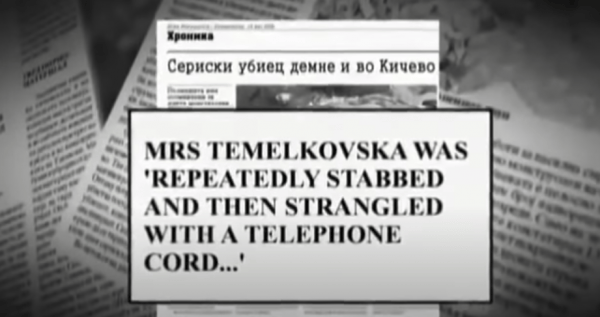
The town of Kicevo, Macedonia, has a population of just under 30,000 people.
In the 2000s, the small European township was the hunting ground of a serial killer, dubbed the “Kicevo monster” by the country’s biggest newspaper.
Across four years, the bodies of three elderly women were found brutally murdered – all raped, beaten and strangled with a piece of phone cable. Their naked bodies were wrapped in nylon bags and dumped.
WATCH: Murder He Wrote: Vlado Taneski. Post continues after video.
64-year-old Mitra Simjanoska was found in 2005, 56-year-old Ljubica Licoska was discovered in 2007, and Zivana Temelkoska, 65, in 2008.
The women were all poor, uneducated cleaners.
A fourth woman, 78-year-old Gorica Pavleska, who disappeared in 2003, was thought by police to be the killer’s first victim, but her body was never recovered.
On May 18, 2008, a local journalist by the name of Vlado Taneski called Nova Makedonija, Macedonia’s oldest daily newspaper and pitched the story, suggesting that he thought the murders were all linked.
The mild mannered 56-year-old father-of-two, had been a respected member of the industry for two decades, and wanted to write about the suspected serial killer stalking his hometown.

